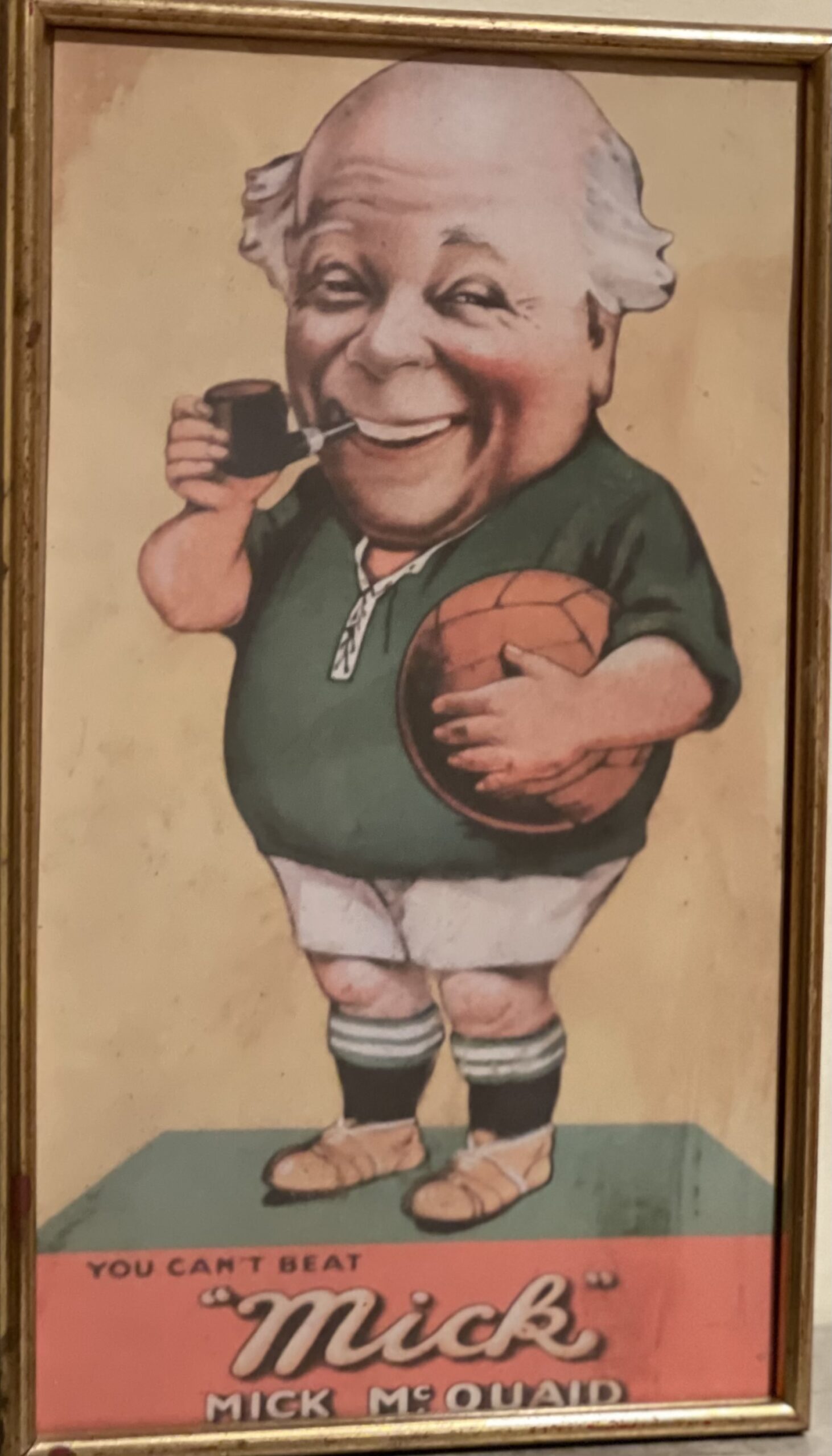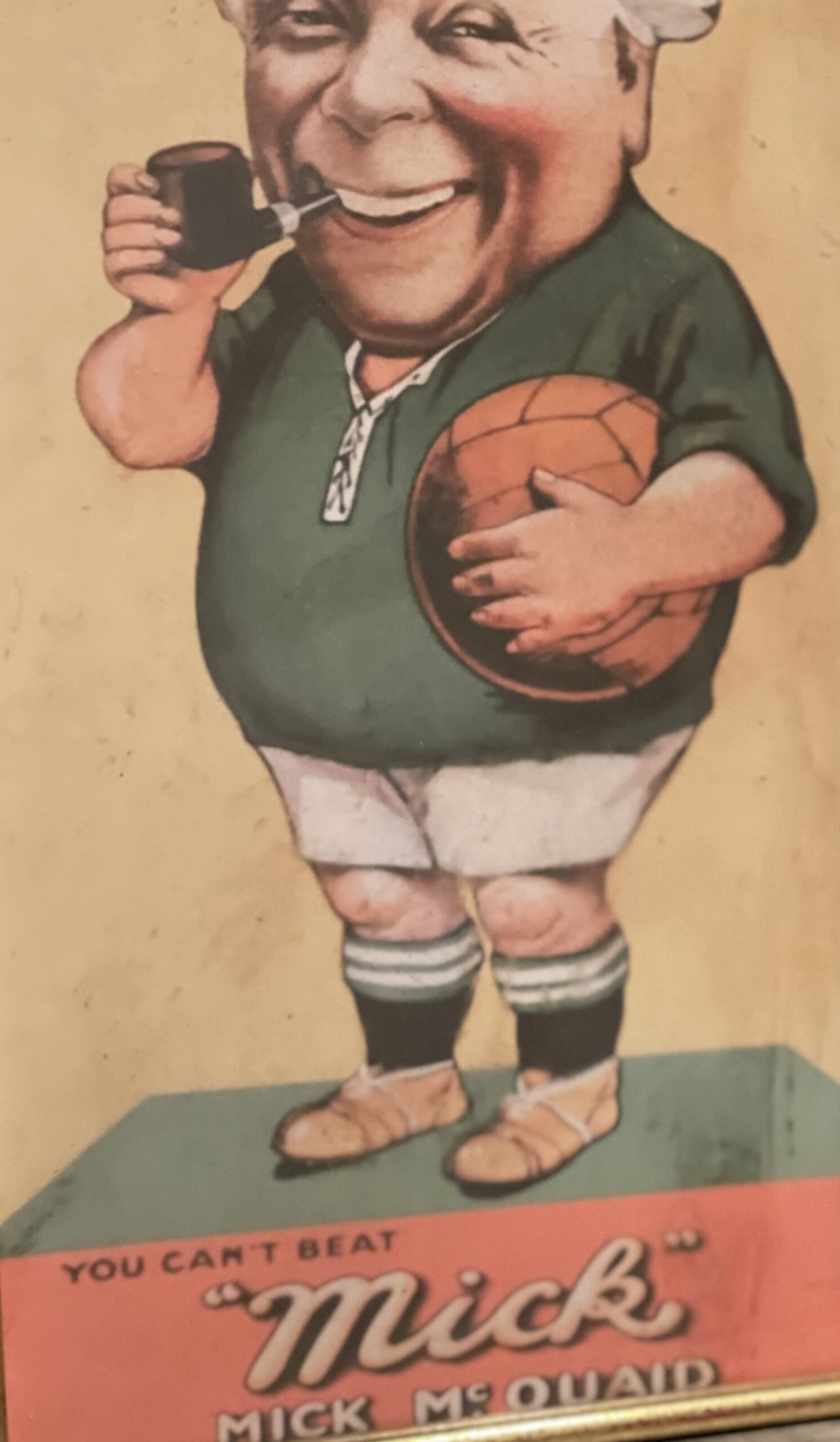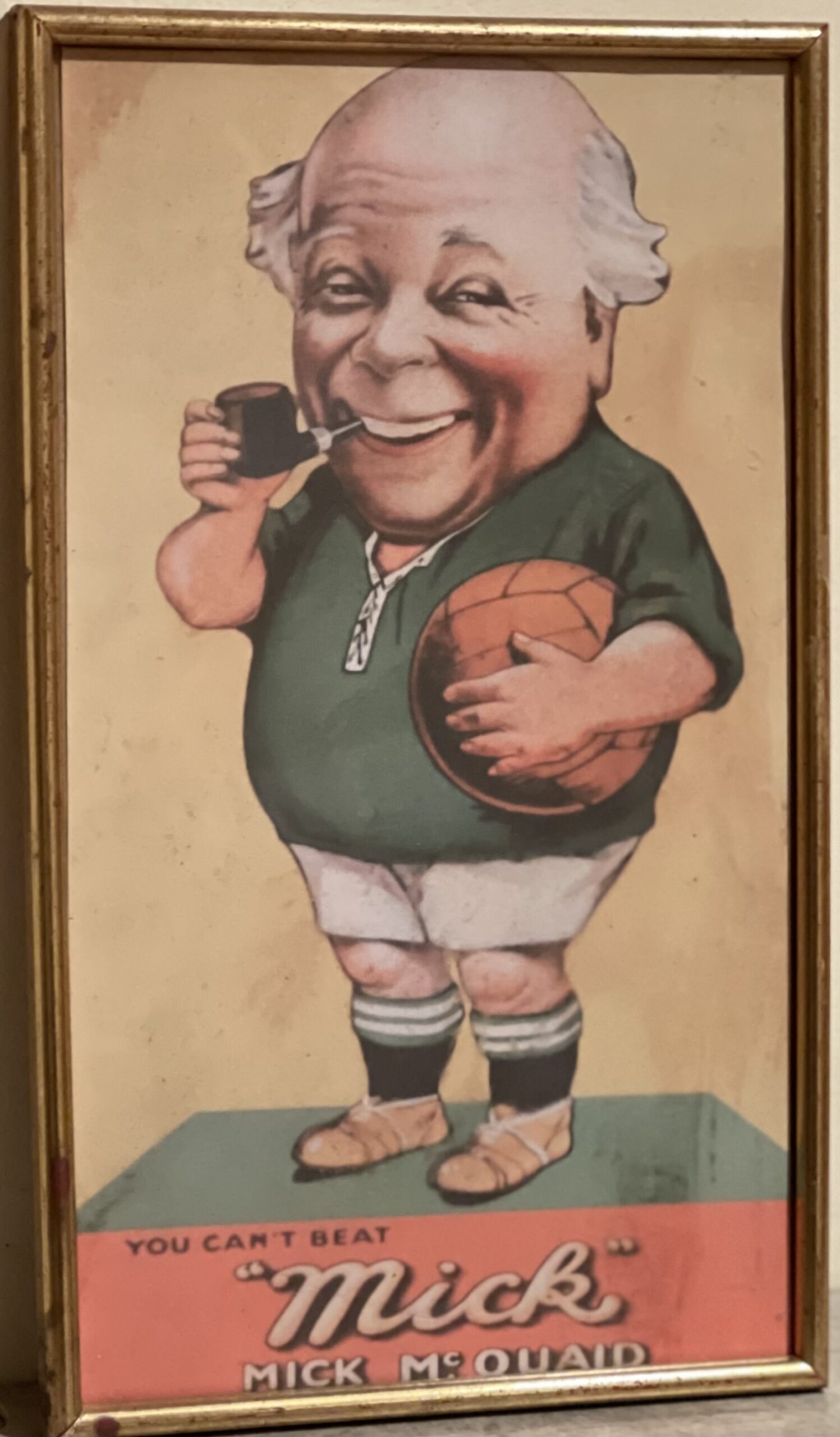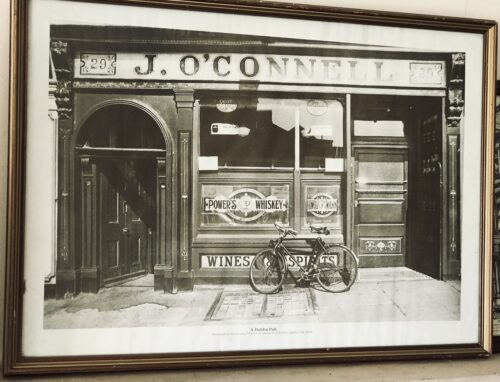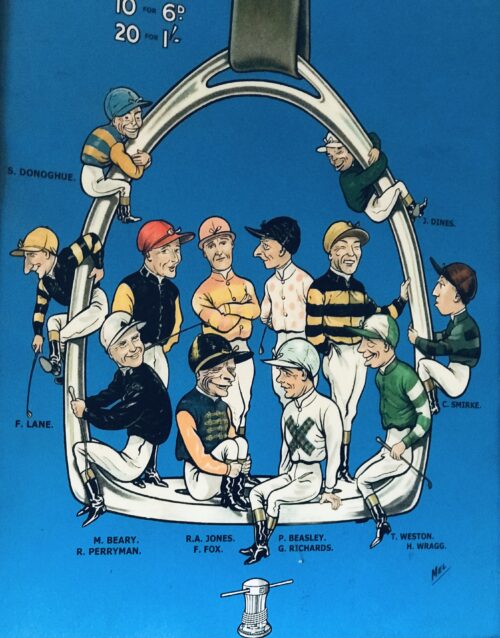40cm x 24cm
A very popular Pipe Tobacco from the P.Carrolls Tobacco Company in Dundalk Co Louth was Mick McQuaids.But who was this legendary, smiling character the product was inspired by ???
The tales of Mick McQuaid were first written by William Francis Lynam – a soldier, writer and editor who was born in Galway in 1833 and died in Dublin in 1894. Little is known about his background (or his military career), but by the 1860s he was living in Dublin and was – it appears – the owner and editor of the Shamrock story paper. One of the earliest Irish story papers, it was established in 1866 as a penny weekly ‘companion’ paper to the Irishman newspaper. The Irishman, a very advanced nationalist paper, was established in 1859 by Richard Pigott – a very colourful character in Irish journalism who would acquire infamy as the forger of the damning letters supposedly written by Parnell in the 1880s. The exact editorial and proprietorial relationship between the Irishman and the Shamrock is rather murky – some sources imply Pigott owned them both, while others insist that Lynam owned the Shamrock, in which case the precise nature of their connection is unknown. Pigott and Lynam may have been actual business partners, or simply had an informal alliance.
The 1860s was of course the era of the Fenian movement in Ireland and abroad, and under Pigott’s editorship the Irishmanwas a very popular voice for Fenianism. If the Irishman was aimed at an adult readership seeking radical political news and commentary, the Shamrock was its more entertaining younger sibling, intended to instil a sense of national pride and identity in its boy (and occasional girl) readers. To do this, it specialised in exciting Irish historical fiction serials, set at key moments of Irish nationalist history such as the 1798 Rebellion or the Jacobite Wars, and usually centred around an ordinary Irish boy who readers could identify with as he became swept into political and military excitements and encountered historical figures such as Wolfe Tone or Redmond O’Hanlon. But as well as historical fiction, the Shamrock also published romances and vernacular tales of Irish life.
The most successful of these vernacular tales were, by a very long way, the Mick McQuaid stories. A series of comic tales (although to be quite honest the modern reader might take some convincing of that description) set in what was then contemporary Ireland, they all featured the adventures of central character Mick McQuaid – a quick-thinking, wise-cracking chancer who nevertheless usually managed to save the day and prevent the more straight-forward villainy of figures such as agents for absentee landlords, or local gombeen men. Each story saw Mick in a new role and setting, such as ‘Mick McQuaid, Money Lender’, ‘Mick McQuaid, Member of Parliament’, ‘Mick McQuaid, Detective’, and ‘Mick McQuaid, Evangelist’. Each story was long, with (overly) complex plots, many characters, comic tangents and multiple narrative threads to be resolved, so they were serialised in short instalments over several months of weekly issues. These kind of serial stories were crucial to story papers, designed to bring readers back week after week and build a loyal and regular readership, and the Mick McQuaid stories were a classic example of their type.
It has to be admitted it would be difficult to that claim the stories deserve to be ‘rediscovered’ by modern readers. They are an interesting window into popular fiction of the era, especially in terms of their representations of Irish life and society – however their plots are unwieldy, their humour has not aged well and they are written in an almost impenetrable ‘Irish’ dialect which was obviously part of their appeal in the 1860s but which is extremely difficult to read now. Instead what is most interesting about the Mick McQuaid stories is their extraordinary popularity across many decades. Lynam reportedly became bored with the stories after just a few years, and indeed replaced them with tales of another very similar ‘charming Irish rogue’ anti-hero, the Darby Durkan series, which in their turn were also fairly popular. But popular demand for continued Mick McQuaid stories forced him to write more of them (a common experience for authors of popular fiction, most famously in the case of Conan Doyle’s reluctant resurrection of Sherlock Holmes). Indeed, the circulation of the Shamrock reportedly dropped sharply when he attempted to end the McQuaid stories, so they had to be revived and reprinted. It is difficult to be sure exactly how many stories there are in total (perhaps ten or so), each one lasting up to 6 months of weekly instalments – but for a youthful audience this was enough to keep printing and reprinting them over years and eventually decades. Rather like the endlessly circulating repeats of television sit-coms in our own era, which happily rewatched by fans and watched for the first time by successive generations (Faulty Towers being the obvious example, with just twelve episodes ever made in the 1970s, but which are still being screened 40 years later) these very popular serials played on an endless loop in the story papers.
Lynam died in 1894, but his serials lived on without him. The Darby Durkan stories appeared in the Shamrock’s rival story paper the Emerald in the early 20thC, and after the two papers merged in 1912 the McQuaid stories also continued in the new paper until its demise in 1919 – and may well have continued to appear in other publications after that although I have yet to find them. Their popularity was such that in 1889 Carroll’s Tobacco company in Dundalk named a new brand of pipe tobacco after Mick McQuaid, who often smoked a pipe in the stories as he held forth with his distinctive folk wisdom. The brand was itself a great success (presumably the tobacco and the stories amplified each other’s standing among readers and smokers in ways that benefitted both), and by the 1920s Carroll’s had commissioned a cartoon version of Mick McQuaid for their packaging and advertising – the photograph accompanying this post is of a tobacco tin from the mid-20thC. So while the stories had not had significant illustrations during their 19thC hey-day, the Mick McQuaid character took visual form years after his author’s death, and in fact became one of mid-20thC Ireland’s most successful brands, only being discontinued in 2016 – a strange afterlife for a fictional character first invented in 1867.

